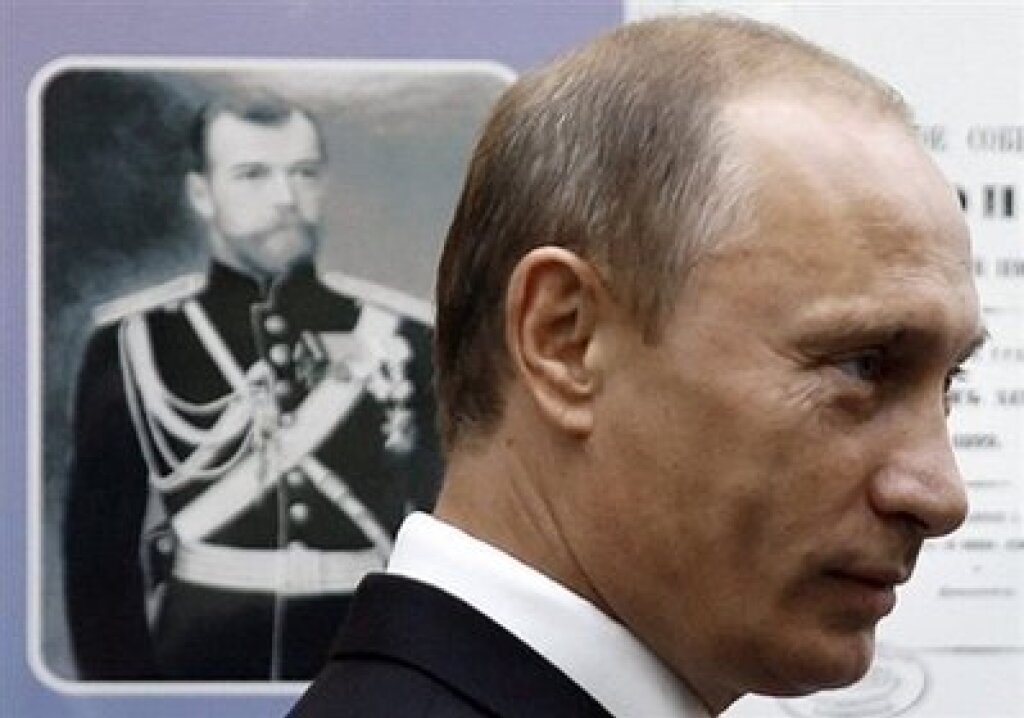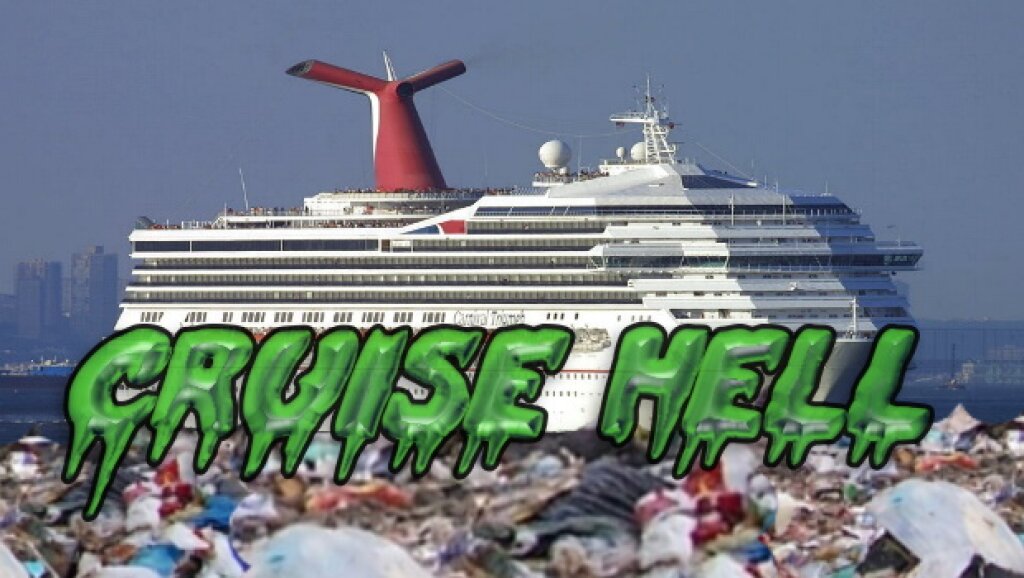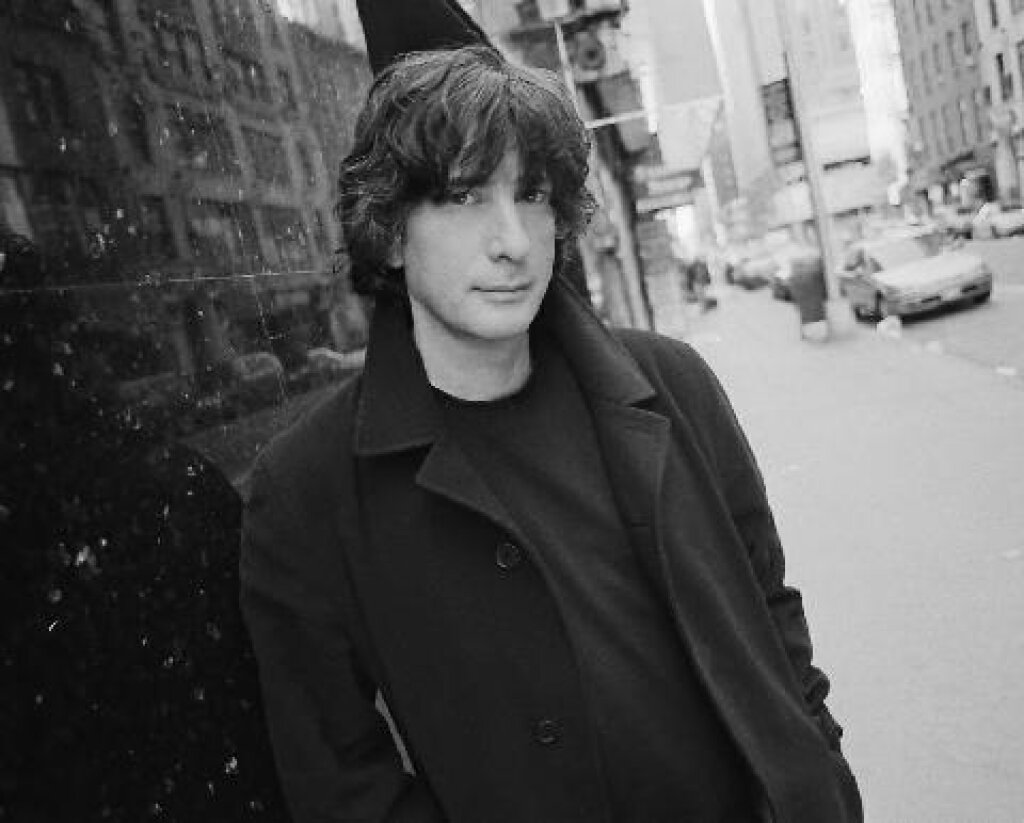Nathaniel Knight is Associate Profesor and Chair of the Department of History at Seton Hall University.
I. Decembrists past and present
On a cold December morning in the capital city a crowd gathered to protest Russia’s new ruler. Slogans and cheers sounded through the winter air as the people awaited the regime’s response…
Readers who have been following the news from Russia may well recognize in the words above a description of recent protests in Moscow in December 2011. Following an parliamentary election marred by egregious violations of electoral law, masses of ordinary citizens came out on the street to vent their anger at Vladimir Putin despite the fact that his victory in upcoming Presidential elections was all but guaranteed. Similar, albeit smaller, protests took place following Putin’s reelection in March.
But the same description might also serve to evoke a very different set of events that occurred almost 200 years earlier. On December 14th 1825, after the unexpected death of the Emperor Alexander I and an awkward misunderstanding about the order of succession, the heir to the throne, Nicholas I, declared himself Russia’s new ruler and demanded that all military units and civil officials swear loyalty. In light of these circumstances, a group of young officers, who for several years had been secretly harboring plans for constitutional reforms, decided to act. Assembling their units, they informed the soldiers that the succession of Nicholas to the throne was illegitimate and instructed them to refuse the loyalty oath. The rebellious regiments assembled in Senate Square by the banks of the Neva River, where they hoped to be joined by the remaining units in the city.
At this point the stories diverge. The protests in Moscow in December 2011, despite arrests and sporadic clashes, passed in relative peace and order. In contrast, the events of December 1825 ended in a bloodbath. After a day of uncertainty verging on panic, Nicholas was able to assemble a core of loyal troops whom he deployed along the edges of Senate Square. As dusk was setting in, the order was given to open fire. Artillery shells and musket fire tore into the rebellious regiments. Hundreds of soldiers fell dead, their bodies later pushed beneath the ice on the Neva River. The leaders, meanwhile, scattered—some were arrested on the spot, others were tracked down in subsequent days, still more, who were involved in the conspiracy but not on the scene were later detained.
Obviously these were very different events with differing contexts, causes and outcomes, but one similarity stands out: In both cases, a ruler was inaugurated in the face of a dramatic gesture of personal rejection. And in both cases the protests became a defining moment setting the tone and the agenda for new regime.
Nicholas I and his supporters were quick to determine the underlying causes of the rebellion. After an exhaustive investigation in which Nicholas personally interrogated many of the accused conspirators, who came to be known collectively as the Decembrists, he arrived at a clear conclusion. It was Western ideas, poorly understood and misapplied to Russia that led to the disturbances. Among his first acts as ruler was to create a new political police force, the Third Section of his Majesty’s Chancellery, dedicated to uncovering and uprooting challenges to the existing order wherever they might crop up. It is said that at the inauguration of the Third Section, Nicholas handed the newly appointed chief, Count Alexander Benckendorff, a handkerchief with the instruction “wipe away the tears from the eyes of my people.” But wiping away the people’s tears, it often seemed, meant wiping away their capacity for independent thought as well. An irreverent song at a drunken student gathering, a few careless words in a letter to a friend or relative, a few too many books on the shelf by forbidden foreign authors—such seemingly minor infractions were enough to elicit the terrifying scrutiny of Benckendorff’s gendarmes, leading in many cases to arrest, imprisonment, exile and even death.
Yet the image of Russia under Nicholas I as an intellectual wasteland is not entirely accurate. Nicholas realized that Russia would never be able to maintain its standing among the European nations without a well-educated elite, and that it was not enough merely to suppress foreign ideas--an alternative was needed. For this, Nicholas turned to his Minister of Education, Sergei Uvarov. Uvarov oversaw an impressive expansion of the Russian system of education carried out under the banner of a new official ideology summed up in the memorable triad: Orthodoxy, Autocracy and Nationality. Intellectuals chafed against the restrictions imposed by Uvarov’s system, later dubbed by historians “Official Nationality,” while ushering in a golden age of Russian literature, philosophy and the arts.
The aftermath of the Moscow protests of December 2011 is more difficult to pin down, but the impact of the unrest in setting the tone for Putin’s new regime is obvious. Following the protests a series of harsh measures were passed imposing draconian penalties on participants in unauthorized gatherings and placing restrictions on public expression of dissent. Once again, the West was implicated as the source of ideological infection: Putin and his allies have repeatedly insisted that the protests were inspired, instigated and funded by the US State Department and CIA. Under a new law, foreign funded NGOs are now required to register as “foreign agents,” a phrase virtually synonymous in Russian with “spy.” Protest leaders have been targeted as well, first with waves of short term arrests to keep them off the streets and more recently with dubious allegations of corruption and theft. And as had been the case under Nicholas I, the immediate acts of repression were followed by ideological measures aimed at inculcating a set of values in line with the goals of the regime. More and more, the tone and substance of these measures have tended to follow the path of Uvarov’s triad.
II. Official Nationality for the twenty first century.
Autocracy from its first appearance in Russia in the late 15th century had the meaning of unified power. A true autocrat was beholden to no other earthly power and ruled by delegating his absolute authority to subordinates who functioned not as autonomous political actors but as servitors--symbolic slaves, utterly dependent on the will of their master. Behind this imposing façade of autocratic rule, the real business of politics transpired--vigorous and often vicious jockeying for power among a tangle of competing clans and interest groups taking place entirely beyond the bounds of legal or institutional structures. To a striking degree, this structure of power has survived through the years of communist rule only to be reaffirmed and reinforced under Putin. The most notable achievement of Putin’s first term was the restoration of what he referred to as the “vertical of power.” What this meant, in essence, was the elimination, if not de jure then de facto, of any and all independent nodes of power outside the purview of top-down presidential rule. Local governors, previously elected under former president Boris Yeltsin, were invested with their power by appointment under Putin. The Russian judiciary, which under Yeltsin had shown at least modest signs of independence under Putin became an obedient instrument of the unified state, convicting political dissidents from the former oligarch Mikhail Khodarkovsky to the punk rock performance artists Pussy Riot on blatantly trumped up charges. And with the rise of Putin’s political party United Russia, the State Duma, Russia’s once unruly parliament, has become a rubber stamp approving any and all measures proposed by the executive branch by an overwhelming margin. United Russia itself embodies the transformation of politics from an arena in which divergent political and ideological interests compete to a mechanism by which a unified bloc of state servitors upholds and maintains its political dominance. While a façade of democratic pluralism is retained in Putin’s Russia, for all intents and purposes, autocracy has returned.
Sergei Uvarov was not known for his deep personal piety and neither is Vladimir Putin. Yet religion occupies a prominent place in the policies of both men. Why is this? A clue can be found in the original French draft of Uvarov’s memoir to Nicholas in which he proposed his triad. Rather than referring specifically to the Russian Orthodox Church, the memorandum refers to an “established religion.” For Uvarov the specific confession was less important than the fact that it was recognized by the state and operated within its constraints. In other words religion would endow the ruler with an aura of sacred charisma, while the state would reserve the right to determine which faiths were acceptable for the population. Thus under Nicholas I, Islam, Catholicism, and the larger Protestant denominations were tolerated, albeit as “foreign” confessions, alongside the official religion of state, Russian Orthodoxy,, while sectarian and dissenting groups were persecuted harshly. Echoes of these distinctions can be found in the current Russian law on religion, in which Orthodoxy is singled out for its “special contributions” to Russian culture and history, while Christianity, Islam, Judaism and Buddhism are recognized as part of Russia’s ‘historical heritage. In contrast, so-called “totalitarian cults,” such as Mormonism, Jehovah’s Witnesses and Muslim sects, are singled out for legal and political reprisals, making it harder and harder for them to operate on Russian soil.
Meanwhile, the Russian Orthodox Church, which has spearheaded these reprisals, enjoys a comfortable status as the semi-official state religion. New and restored churches have sprung up everywhere. The faithful flock on pilgrimages to cultural and historical sites that have been turned over the Church for its own use. Increasingly Orthodox religious education is making its way into school curricula, while Orthodox prayers are conspicuously featured in public ceremonies and commemorations. The influence of the Church in Russian society was most dramatically highlighted by the Pussy Riot trial in the summer of 2012, in which three young women were convicted of “blasphemy”, a crime that is never mentioned in the Russian Criminal Code, on the basis in part of the writings of 4th century Orthodoxy theologians. As was the case under Nicholas I, religion is valued by Putin and his circle as a source of legitimacy and a guarantee of obedience and social stability. The increased emphasis Putin has placed on values and morality since his reelection is part of a larger strategy to restore order and marginalize opposition.
Uvarov’s “nationality” (narodnost in the Russian rendition) is perhaps the most elusive of the three elements in his triad. It has often been taken to mean an embrace of Russian ethnic nationalism—a chauvinistic position of “Russia for the Russians.” But such an interpretation fails to account for the specific features of the Russian Empire in the era of Nicholas I. Russia under Nicholas was a vast and diverse territory ruled over by a multiethnic elite: Germans, Finns, Poles, Ukrainians, Georgians, Armenians and even Tatars participated alongside Russians in the governance of the empire. An Emperor who appointed top ministers with names like Benckendorff, Meyendorff, Kankrin, and Nesselrode could hardly be seen as a proponent of Russia for the Russians. Yet the force of nationalism, spreading throughout Europe in leaps and bounds at the time, could not be ignored. Uvarov’s solution was to craft a rendition of nationalism based not on ethnic identity and pride, but rather on patriotism, loyalty to the ruling dynasty and above all devotion to the Emperor. Under Uvarov’s Official Nationality, a Russian was anyone with his head bowed down before the Tsar.
Like Nicholas I, Putin also faces the challenge of balancing the reality of ethnic and cultural diversity against the need for a compelling national ideology, and he too has chosen to emphasize patriotism and national pride focused on the achievements of the state. History has provided fertile ground for the articulation of a new national ideology. The 200th anniversary of the “Patriotic War” of 1812 against Napoleon was marked with lavish commemorations highlighting Russia’s military prowess as well as the continuity of state power from the Tsarist period through the Soviet years (via World War II) to the present day. Overseeing the festivities was the newly appointed Minister of Culture, Vladimir Medinsky, a self-styled historian who over the past few years has been engaged in a one-man crusade to cleanse the historical record of alleged falsifications and slanders against Russian honor. Among the targets of his scrutiny are Tsarist era anti-Semitic pogroms, Stalin’s Gulag and the annexation of the Baltic States by the Soviet Union at the start of World War II—all crimes which Medinsky argues have been falsified and distorted by pro-Western historians. No matter that these events are thoroughly documented and widely accepted as fact. For Medinsky and his mentor Putin, historical accuracy is secondary to the need to create a narrative of glorious achievement by the Russian state that can serve as an inspiration for national pride.
In the international arena as well, Russia under Putin seems to have fallen back into a pattern strikingly similar to the era of Nicholas I, when Russia was seen as the “gendarme of Europe” standing fast against the subversive forces unleashed by the French Revolution. Under Putin, Russia again sees itself as a bastion of order and stability in a world wracked by revolution and disorder. In the face of the so-called “color revolutions” and the Arab spring, Russia has stood steadfast in support of the status quo, upholding dictatorships, sanctioning electoral fraud and defying the mainstream of world opinion in its quest for stability. For Putin and his ruling elites, the phenomenon of ‘people power’ is anathema—the power of the state over its population is an absolute imperative that must never be violated.
III. The Challenge of Continuity
As we have seen, the structural and substantive similarities between present-day Russia under Vladimir Putin and the reign of Nicholas I are not difficult to discern; to explain them is a much more difficult task. Some may feel that there is nothing really to explain, that, as so often occurs in instances when history seems to repeat itself, what is really at work is the human capacity for pattern recognition: juxtapose any two sets of events, and a perceptive observer will inevitably find areas of congruence. But where there is a direct line of historical continuity, such parallels cannot be so easily dismissed. The common elements in question here are not merely superficial resemblances between disparate eras: they are deeply rooted long standing structural elements that have appeared and reappeared over hundreds of years.
Historians are ill-equipped to engage these questions of long-term continuities. By suggesting the presence of elements enduring over centuries one tends to veer into dangerous terrain. Arguments based on the influence of long-term cultural and political traditions tend to evoke memories of the long repudiated “national character” studies of the 1940s. Accusations of essentialism, primordialism and determinism are liable to ensue. There is a good reason for this. In the Western liberal mindset, it is taken almost as an article of faith that societies can and do change over time, moving toward universal values of freedom and democracy. Even when we sense intuitively the weight of tradition, we lack the conceptual tools to substantiate these continuities with any degree of scholarly rigor.
How then to explain the echoes of the era of Nicholas I in Vladimir Putin’s current regime? Are these parallels evidence of a distinctive “Russian path” at odd with Western democratic values, from which the Russians neither can nor should try to diverge? This is, in fact, a view that Putin himself has expressed and endorsed on numerous occasions. More neutral observers, however, are likely to find this position unbalanced to say the least. The unified autocratic state has been an enduring strain in Russian history, but Russia also has a tradition of reform. The fact that Putin, for all his authoritarian proclivities, feels obliged to maintain the external appearance of democracy, is a direct legacy of reforms in the late 1980s and 1990s. The fact that Putin’s security police, the FSB, can no longer operate with the ruthlessness and impunity of Stalin’s NKVD is a legacy in part of Nikita Khrushchev’s policies of destalinization. The fact that ordinary Russians while still burdened by the demands of the state enjoy uncontested personal freedom is a legacy of the great reforms that followed the death of Nicholas I in 1855 in which serfdom was abolished once and for all. Almost certainly, the new Russian authoritarianism ushered in by Putin will eventually give way to another phase of reform. The challenge then will be to break the cycle, to channel pent up energy toward the creation of strong institutions that will prevent the appearance of yet another dictator. To accomplish this, Russians will need to avoid the temptation to fixate on a single leader. Regime change by itself will never transform the underlying dynamics of power. Rather it is the quiet evolution of minds prompted by higher levels of education, independent institutions, exposure to the outside world, economic prosperity and stability, that will bring more lasting change. Nicholas I, in expanding Russian education and improving the effectiveness of the state bureaucracy, prepared the way for a wave of reform after his death. Putin prides himself on creating an atmosphere of stability, prosperity and innovation in Russia. It may well be that he is sowing the seeds for the next revolution.



